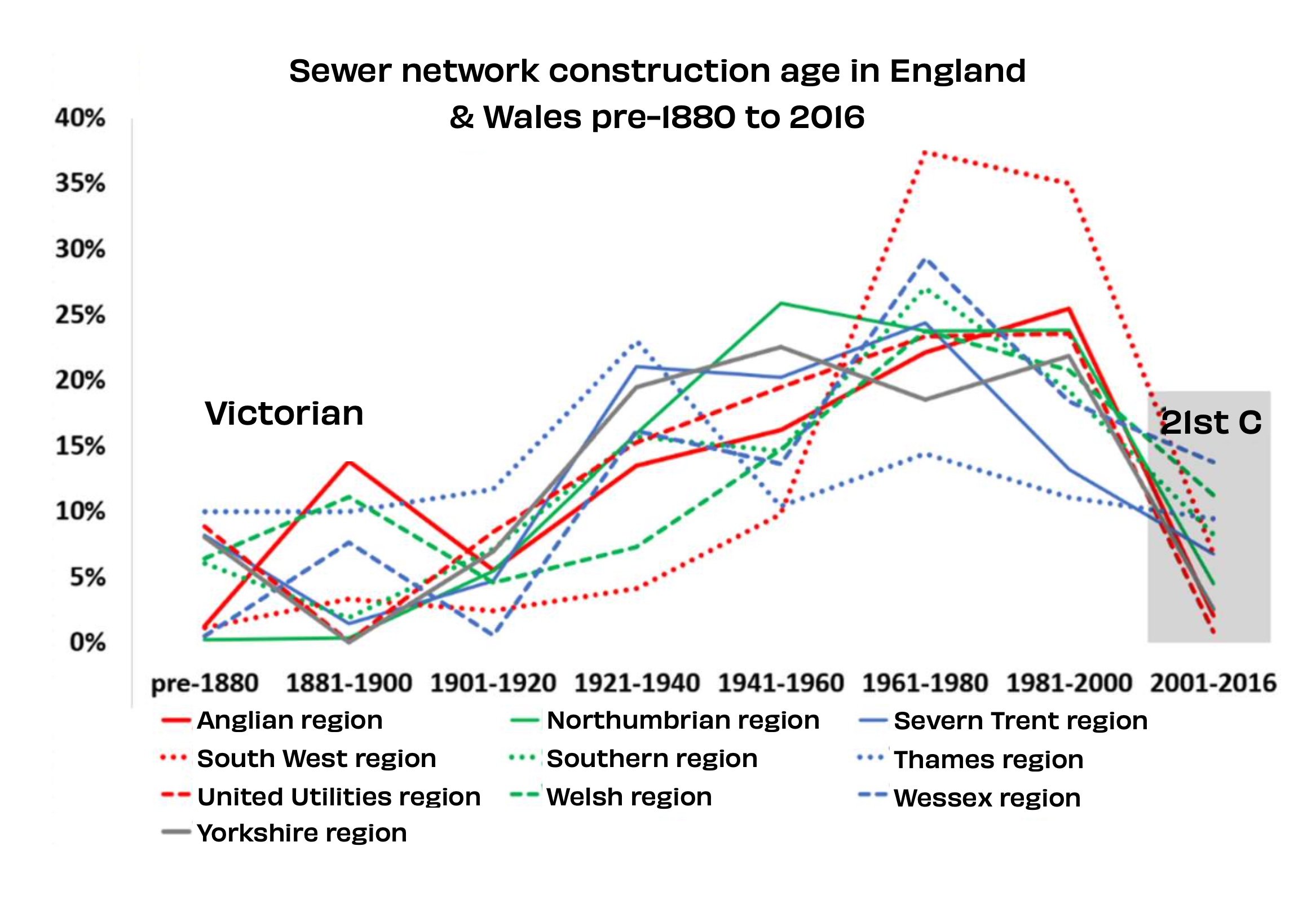The Truth About the UK's Sewage Network
Matt Staniek
What is to Blame for the Destruction of our Freshwater Ecosystems?
Recent research conducted by the University of Oxford has shed light on the highly debated question - what are the main drivers behind increased nutrient levels and algal growth in our freshwater systems?
This new study finds that pollution from treated and untreated sewage is the greatest threat to river biodiversity, causing more damage than runoff from farms. It is the primary driver of increased nutrients, algae and sewage fungus in rivers.
Additionally, we witness millions of litres of treated sewage entering the catchment on a daily basis. It is evident that the existing infrastructure is inadequately equipped to handle the needs of the Lake District’s visitor economy.
The lead author, Dr Dania Albini, of Oxford’s biology department said:
“Improvements to wastewater plants should be implemented along with more regulations. These efforts are crucial in safeguarding the integrity and safety of our rivers – fundamental elements of both ecosystems and human wellbeing.”
This study emphasises the disproportionate impact that sewage discharge has on the quality of our freshwater and reiterate’s the fact that responsibility must fall on those who are truly at fault.
You can read a full summary of this research in the Guardian here.
Victorian Sewers Not the Problem
Now we know that sewage is the main driver for the decline in our rivers and lakes, it's time to ask why the problem of sewage discharges is so prolific in the first place.
So let’s set the record straight: Less than 12% of England and Wales' sewage network dates back to the 19th century, debunking the myth that antiquated Victorian infrastructure is to blame for the dumping of untreated sewage into our rivers, lakes and coastlines.
This revelation challenges the water industry's excuses and government claims, revealing that the majority of the network was actually built in the decades leading up to privatisation, with a significant portion constructed during the 1960s and 1970s.
What’s even more shocking about this report is the revelation that there has been significantly less investment in the infrastructure post-privatisation compared to pre-privatisation. In essence we saw growth of the network in the lead up to privatisation, followed by decades of underinvestment.
Professor Hammond’s analysis of a report by Arup/Vivid economics (ironically sponsored by United Utilities) dismantles the narrative that Victorian-era infrastructure is to blame for the environmental degradation we're witnessing. The failure to maintain and modernise our wastewater infrastructure is the real issue. This revelation is pivotal in changing the discourse around water pollution and underscores the urgency for robust investments and upgrades. This begs the question: Why has the government been peddling the same narrative as the water industry?
You can read Professor Hammond’s full report here.
New Study Finds 80% of Spills Nationally Linked to Inadequate Capacity
To further support our argument that inadequate infrastructure and a lack of investment is the key contributor to Windermere’s pollution woes, recent findings highlight that an alarming 80% of sewage spills nationally are due to the lack of capacity in wastewater treatment plants, not just erratic weather or climate change, as often claimed.
Source: Financial Times
Previous work conducted by Professor Hammond has shown illegal spilling in the Windermere catchment which further strengthens the case against the water companies and their excuses. Illegality is defined by Professor Hammond as sewage spills in dry weather periods or before the capacity of the works is reached. Professor Hammond’s work showed illegality at Ambleside WWtW, Near Sawrey Pumping Station and Hawkshead Pumping Station in the years in which United Utilities has provided data. You can find analysis for Ambleside WwTW below.
We at Save Windermere have long advocated for holistic solutions that address the root causes of pollution, such as upgrading wastewater infrastructure. This revelation reinforces our demands – that water companies and regulators prioritise immediate investment in capacity building and modernisation. Our cherished lake deserve nothing less than a thriving and pollution-free future.
The facts speak for themselves: outdated Victorian infrastructure isn't solely responsible, and neither is the weather. The real culprit is woeful underinvestment, an issue that must be tackled head-on to safeguard our environment for generations to come.
Who Covers the Cost?
In a legal battle initiated by WildFish, another one of Save Windermere’s partner organisations, a crucial point has emerged that shifts the responsibility back to where it rightfully belongs. The government's acknowledgment that the Storm Overflows Discharge Reduction Plan doesn’t provide a ‘get out’ from existing sewage discharge violations under the 1994 law reinforces a significant fact: taxpayers shouldn't be burdened with covering the costs of rectifying these violations.
The heart of the matter lies in the Urban Wastewater Treatment (England and Wales) Regulations 1994, a law derived from a 1991 European Directive that restricts sewage overflows only to times of extraordinary rainfall. The implications of this legal challenge are clear: water companies must now take responsibility for their failure to comply with these regulations. It's not a matter of extending deadlines; it's about enforcing statutory obligations.
This should serve as a wake-up call to OFWAT (the economic regulator of the water sector in England and Wales) to fulfil its duty and enforce the existing breaches of the 1994 Regulations. The onus is on them to ensure that water companies bear the financial burden of adhering to these long-standing obligations, not the consumers who have already borne enough.
Nick Measham, the CEO of WildFish, emphasises the importance of this shift:
"We will ask OFWAT to ensure that it enforces existing breaches of the 1994 Regulations expeditiously and at no cost to customers."
This signifies a step towards accountability and justice, aligning with the interests of the public and the environment. Guy Linley-Adams, Solicitor for WildFish, aptly points out the irony:
"The Government’s Plan itself is now seen to be exactly the 'smoke and mirrors' exercise that WildFish claimed it to be. By addressing these longstanding, unaddressed breaches of law, we pave the way for cleaner rivers and lakes, and a future where the public isn't unfairly burdened with the costs of rectifying others' negligence.”
The work of our partners at WildFish and Windrush Against Sewage Pollution highlight the scale and severity of the national sewage scandal. These organisations are doing an incredible job in bringing to light the failings of the water industry and government, and leading the national conversation on sewage pollution. This is an issue that affects us all and the Save Windermere campaign is taking a stand for our lake – advocating for long-term protection through investment in inadequate infrastructure, and challenging the notion that the public should bear the cost of rectifying these long-standing issues. Windermere is the epitome of these failings. Our most iconic lake, in a National Park and a UNESCO world-heritage site: how did we let this happen to our lake?
Let's ensure water companies shoulder their responsibilities and work towards a cleaner, safer, more pristine Windermere for everyone.
Analysis: A Closer Look at Ambleside WwTW
Let’s look at Ambleside as an example of Professor Peter Hammond’s work within the Windermere catchment.
WASP submitted an EIR request to UU on 28/02/2022 for detailed EDM and detailed sewage treatment data for 5 locations including Ambleside STW. A subset of the requested data was provided by UU two months later on 28/04/2022. The remainder has never been provided. When analysing this data, WASP believes that:
In 2018 the works spilled illegally every day for the 14 days in 2018 between October 19th and November 2nd, as well as on the 8 days Jan 26th; Aug 20th, 21st, 22nd; Sep 13th, 23rd; Nov 17th, 18th.
In 2019, WASP believes there were illegal spills on 15 days: Feb 12-15; Mar 18; Jul 23-25; Aug 16, 19-21.
In 2020, UU refused to provide detailed EDM data citing an EA investigation launched in November 2021.
And for 2021, the data provide by UU to the EA was unusual, with “N/A” entered in place of the number of spilling hours and 0% EDM monitor activity due to an ‘installation’ issue. Despite this, UU did provide detailed EDM SPILL data to WASP that looks intermittently consistent with rainfall data and the detailed flow and data. Based on this, WASP believes there were between 900 and 1300 spilling hours, with 13 illegal spilling days at Ambleside in 2021. Since, UU have published the full 2021 data, but without the level of detail which would enable scrutiny of illegality.





